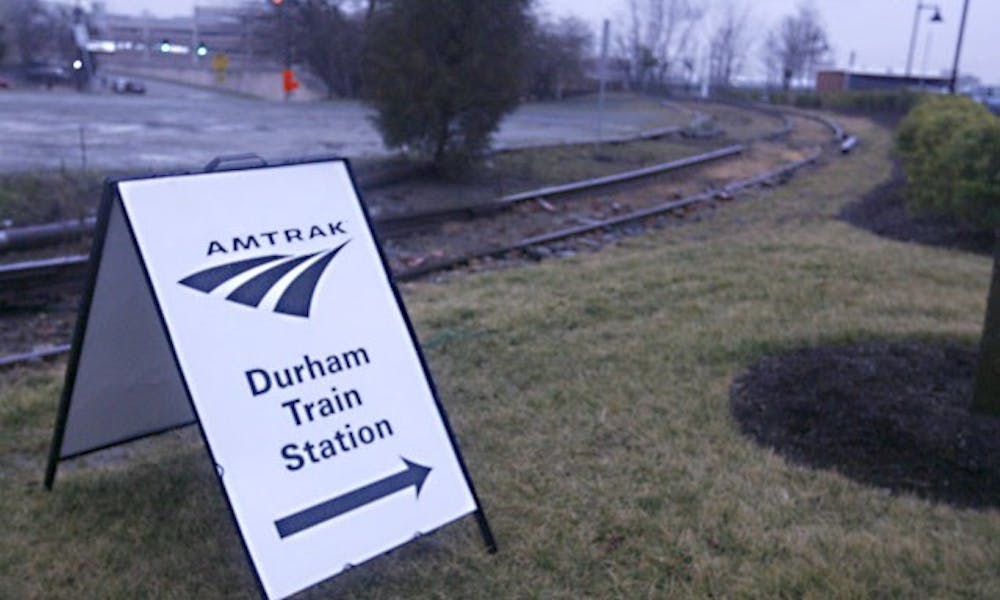More than a month after President Barack Obama allocated $585 million to North Carolina to build high speed rail networks, state transportation experts have responded with mixed opinions about the project’s necessity and expected impact.
The money was granted through the American Recovery and Reinvestment Act of 2009, which includes federal tax cuts and domestic spending for infrastructure. The North Carolina Department of Transportation plans to use the funding to purchase locomotives, straighten rail lines and update train stations, said Pat Simmons, director of NCDOT.
“[The project] would provide some jobs during the construction, however modest,” said Mike Walden, William Neal Reynolds distinguished professor and professor of agricultural and resource economics at North Carolina State University.
Walden said high speed rail may not be suited for a country with such geographic spread as the United States, noting that Europe has been successful with high speed rail because of its dense concentration of cities.
“In economics we ask, ‘Is that the best use of our dollar?’” he said. “My question would be whether those funds could be better put to use, perhaps serving a wider range of highway needs.”
Nagui Rouphail, director of the Institute for Transportation Research and Education and professor of civil engineering at N.C. State, said that although the new rail updates will not be as sophisticated as those in places like South Korea, Japan or Europe, they will cut travel times significantly by running trains with maximum speeds of between 90 and 110 miles per hour.
Currently, freight and passenger lines share the same rails, meaning that technical improvements are both possible and necessary, Rouphail noted.
“In my mind, [for] those short hauls between 300 and 400 miles—like D.C. and Charlotte—a train ride is very efficient and the most feasible alternative,” Rouphail said.
Factors such as the price of oil and jet fuel will dictate whether high speed rail can eventually reach the capacity it enjoys in other countries, he added.
“It’s going to be a slow process,” Rouphail said. “I don’t see that happening in the next 20 years.”
Michael Sanera, research director and local government analyst for the John Locke Foundation, a North Carolina think tank, said the project will only serve city-center-to-city-center commuters, which include primarily regional business executives.
“It’s a tremendous waste of money,” Sanera said. “It’s unfortunate that most of the media coverage has not pointed [to] the reality of the situation.”
Sanera said the money should instead be returned to taxpayers for them to spend as they please.
“Allowing government to make the spending decisions for millions of people is not the way to get out of the recession,” he said.
The stimulus package allocated an additional $1.3 billion to Amtrak, $282,000 of which will be spent on North Carolina. Amtrak operates the Charlotte-Raleigh Piedmont rail line and the Charlotte-New York Carolinian rail line under contract with the state, according to the Amtrak Fact Sheet for fiscal year 2009. The Piedmont line receives 68,427 passengers annually and the Carolinian line has an annual ridership of 277,740, according to Amtrak’s February 2010 Fleet Strategy.
Amtrak also runs four long-distance rail routes with stops in the state.
“We work closely with our state partners, of which North Carolina is one,” said Karina Romero, manager of media relations at Amtrak. She noted that Amtrak had no involvement with the way that North Carolina stimulus funds were distributed.
Of the $282,000 Amtrak plans to spend on the state’s rail system, $105,000 will be used for field operations and wireless access for the Raleigh station, with the rest to be spent on Charlotte’s station.
Raleigh, the state’s busiest rail stop, serves 141,234 passengers yearly, compared to 134,173 passengers in Charlotte and 52,444 passengers in Durham.
Get The Chronicle straight to your inbox
Signup for our weekly newsletter. Cancel at any time.

